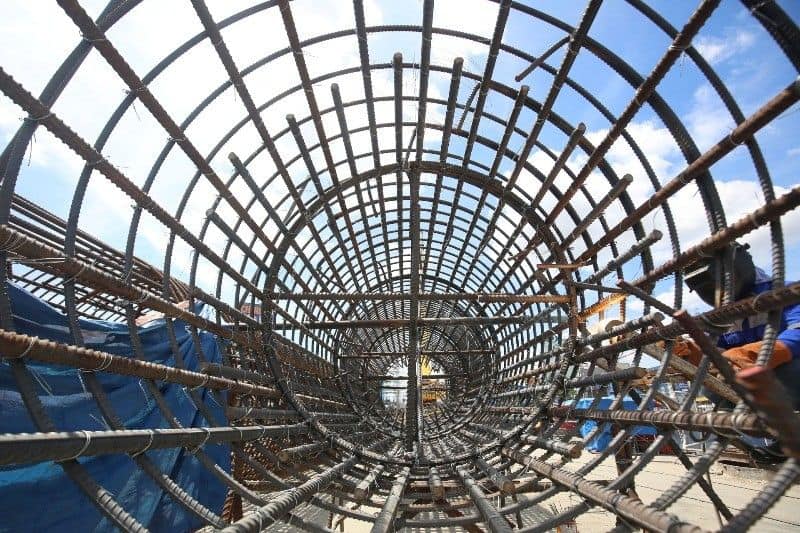
MANILA, Philippines — Government infrastructure spending returned to the negative territory in July, as strict health protocols imposed to arrest the coronavirus spread weighed down on much-awaited resumption of construction activities.
Capital outlays sagged 16.7% year-on-year to P71.8 billion in July, the second month of economic reopening in Metro Manila and other key urban areas, data released by the budget department on Wednesday showed.
Compared to June, when infrastructure spending briefly reversed to a double-digit annual growth after three months of slump, capital outlays declined 7.4% in July.
In explaining the latest decline, the budget department said building turned “gradual” amid “health and safety protocols” enforced in the workplace. That scenario was particularly evident at the public works department, which holds the bulk of capital outlay budgets.
“It’s actually a surprise that it is negative even this July…However, this tells the difficulty on government’s side in the implementation of infrastructure spending during a crisis,” said Ruben Carlo Asuncion, chief economist at UnionBank of the Philippines, in a text message when sought for comment.
In addition, the budget agency said the onset of rainy season last June likewise hampered construction. Present building activities also had a hard time matching last year’s high base effects in July when the military shelled out large sums for new defense equipment.
Struggling
On the part of contractors however, financial constraints to carry on with big-ticket projects remain a problem. Since infrastructures are constructed for long periods, companies get paid in stages of building, which severely slowed down after a three-month stoppage during lockdowns.
“The contractors are still struggling. We were asking the government to expedite the release of overdue payments because some of our members do not have the financial muscle to survive,” said Ibarra Paulino, executive director at Philippine Constructors Association, an industry group that claims to corner 80% of state projects.
“Most workers also went home and returned to the provinces and do not want to return for now because of the situation, so there’s a shortage of workers,” he said in a phone interview.
Breaking down the July outlays, P52.3 billion went directly to infrastructure projects, but the amount was 30.4% down from last year. For the first 7 months, this segment amounted to P350.3 billion, down 9.4% on-year.
On the flip side, a total of P10.8 billion was given to towns, cities and municipalities in July to assist on building infrastructure in their localities, up 78.1% year-on-year, and bringing the 7-month tally to P101.4 billion, up 32.9%.
Finally, a minimal P100 million was given to state corporations as equity for big-ticket projects in July for a total of P800 million so far this year, inching up 6.1% year-on-year, figures showed.
A month of lackluster infrastructure spending marked a setback in the Duterte administration’s recovery plan that counts on its flagship “Build, Build, Build” program to restore destroyed jobs and supercharge the economy out of recession. This has been felt on the ground, Paulino said, citing one firm currently holding 27 contracts, but have only restarted 17 since the economy reopened.
“If there will be some recovery in activity that will only happen first quarter of next year. This year is all about survival for the contractors,” Paulino said.
#realestateblogph | #realestateblogphpropertynews | #REBPH
Article and Photo originally posted by Philippine Star Global last September 16, 2020 1:22pm and written by Ian Nicolas Cigaral.







More Stories
Vista Land Celebrates 50 Years with Sandiwa: An Event Honoring Leadership, Legacy, and the Filipino Dream of Homeownership
Vista Land Celebrates Love Month in Ilocos Region
Vista Land Bridges Cebuano Heritage and Progress with Valencia by Vista Estates